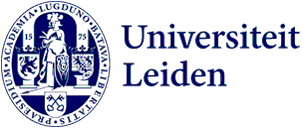
Archaeology student Anne Wagemakers wins LISF prize for report on research in Spain
With the help of a LUF grant, archaeology student Anne Wagemakers investigated an archaeological assemblage in Spain. Now her research report has won the annual LISF prize.

Research project in Spain
Back in December 2022, master's student Anne Wagemakers applied for a research grant at the Leiden University Fund. She was granted a sum of money for a research project in Madrid, Spain, that would lead to her master's thesis. ‘In return they ask you to write a report. With this report you are automatically in the running to be nominated for the prize.’ Her report was deemed worthy of nomination for the LISF prize. On February 10, 2024, she was actually awarded the prize during the Dies natalis celebrations for alumni.
Archaeozoological remains
The archaeological assemblage in question, containing a lot of archaeozoological remains, was located at the Autonomous University of Madrid. It originated from a medieval fortress site at Albarracín. ‘The excavation had never been published, and there was not much information on the stratigraphy for the specific trenches that I studied. Therefore, I decided to send a selection of the remains to be radiocarbon dated.’

Reconquista
In personal communications with one of the archaeologists who wrote her doctoral thesis on archaeozoological remains from other trenches, Anne got some contextual information about the site. The place played a role in the ebbs and flows of the reconquista, the period in which the northern Spanish kingdoms made a push into Islamic southern Spain. ‘This makes it a very interesting site where a lot was going on. These political dynamics had an impact on the faunal remains. What we see is a change in the exploitation of certain animals.’
Griffon vultures
The assemblage of faunal remains was the most diverse that Anne ever worked on. ‘You see the standard domestic species, like sheep, goats, horses, and donkeys. But also many bird remains. The most striking one being the Eurasian griffon vulture.’ Anne is intrigued by the relationship between humans and animals. ‘While the majority of the assemblage consists of domestic animals, of which butchery marks clearly points to the interaction with humans, my results indicate that some animals at Albarracín were hardly in contact with humans at all.’
Web of relationships
Anne aims to graduate in the Summer of 2024. ‘I'm currently working on the main research questions of my thesis. I plan to build a web of relationships between the different species that lived at Albarracín. And then it would be very interesting to look into what cultural aspects gave the web its shape and how it shifted over time.’
